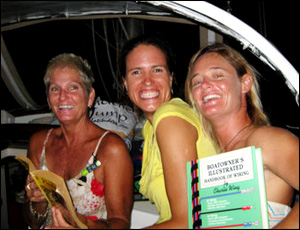This article was first published on YachtPals.com.
Leaving land life behind to go cruising can seem like a big step, but coming home afterwards can be just as challenging.
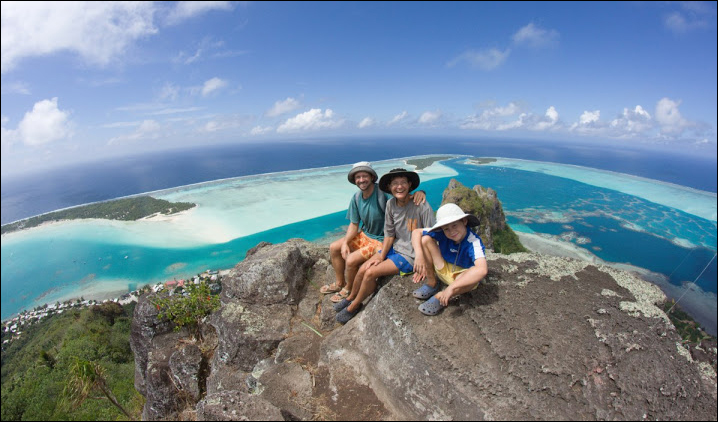
We’ve completed two extended “seabatticals,” and the emotional process of transitioning back was very different each time. The physical process, on the other hand, was similar: in each case, we came back to the same town in the same part of the world (Bavaria) and in my case, to the same job.
With those experiences in mind, I’ll look at how each of us transitioned back and what factors helped ease that process.
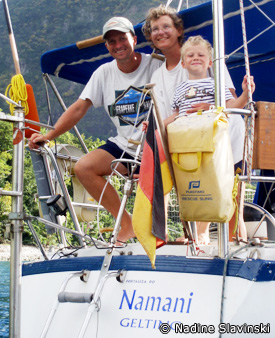
First trip: In the Caribbean
• Our first trip (2007-2008) was a year-long cruise which took us from the Mediterranean, across the Atlantic, around the eastern Caribbean, and up to US East Coast to Maine.
Our son went from being 3 to 4 years old during that time, and my husband and I both had a leave of absence from work so we could return to the same jobs. We had given up our rented home and sold the car, so when we came home, we had those things to sort out.
For me, coming home from the first trip proved to be a surprisingly difficult transition and it took months to get out of the slump.
• Our second trip (2011-2014) was a three-year trip that took us from Maine to Australia on the same boat.
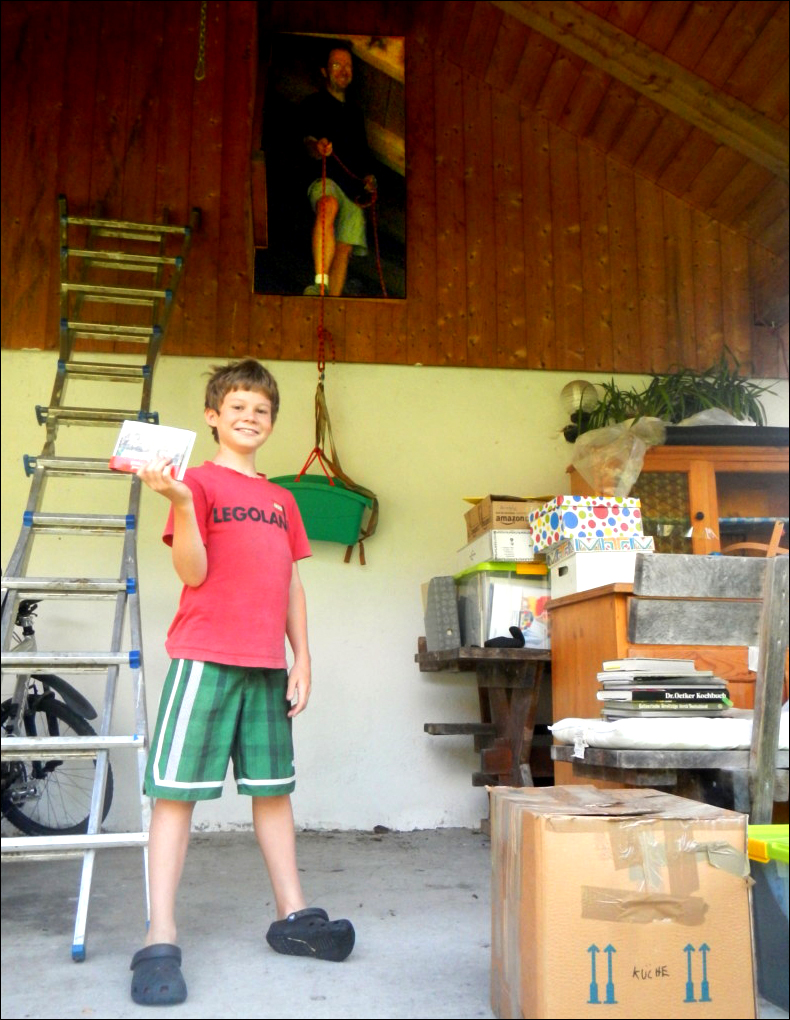
Second trip: Back in our apartment in Bavaria
Our son completed grades 2, 3, and 4 during that trip, an upon our return, he went back to the same school he left after grade 1. I had a leave of absence from work while my husband resigned from his position.
We were able to sublet our rental apartment and loan out our car, so when we came home, we had both waiting for us.
For me, the transition back from that trip was very smooth due to factors beyond those conveniences.
We also lucked in to a very long, easy-going transition time: after we sold the boat in Australia, we enjoyed land travel for six weeks before going to Maine for another six weeks. In Maine, we were land-bound but right on the edge of the ocean, and we weren’t working yet.
We returned to our home in Germany with two weeks before “real life” started up in earnest with the start of a new school year.
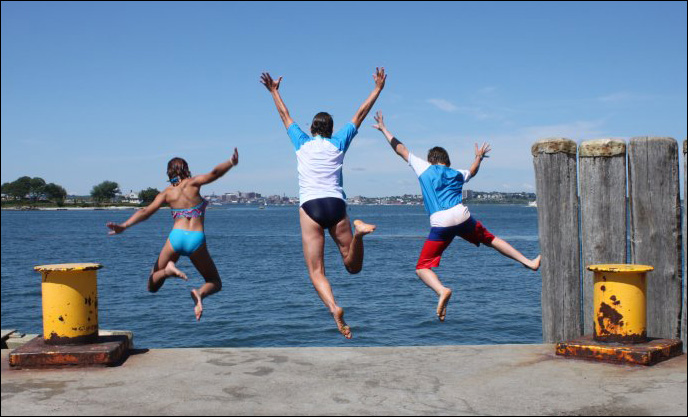
In Maine. New challenges and new forms of fun are one good way
to fight post-cruising blues
Each trip, therefore, was followed by a very different experience.
Although our first trip was shorter, it took me a much longer time to transition back afterwards.
Why?
The biggest factor, I believe, is that we finished the first trip wishing for more sailing time. Although we accomplished everything we intended from the outset, it still felt too short. We had just tasted the sailing life and it was time to go home.
During that trip, we also met several sailing families who continued in to the Pacific and seeing them carry on while we headed home had me regretting that I hadn’t dared to dream an even bigger dream.
The transition back, at least for me, was hard, because my heart and soul were still out cruising. Compounding that was the fact that the apartment we did find wasn’t available for nearly two months, so we had a long period of temporary housing to deal with as well.
To my surprise, coming back from the three-year trip was much easier. I thought it would be harder, but that didn’t prove to be the case.
The two main reasons for this were that
- We had planned for a two-year trip and were able to extend it into three full years, so it already felt we’d won a lottery,
- Though I could have continued cruising forever, we had a greater sense of completion than after the first trip.
Much as we would have loved another three years in the Pacific, we felt like we had seen and done more than we ever wished for.
In addition, most of the dear friends we made along the way wrapped up their sailing adventures at around the same time, so there wasn’t so much of that feeling of watching the rest of the kids enjoying the playground while we were stuck indoors.
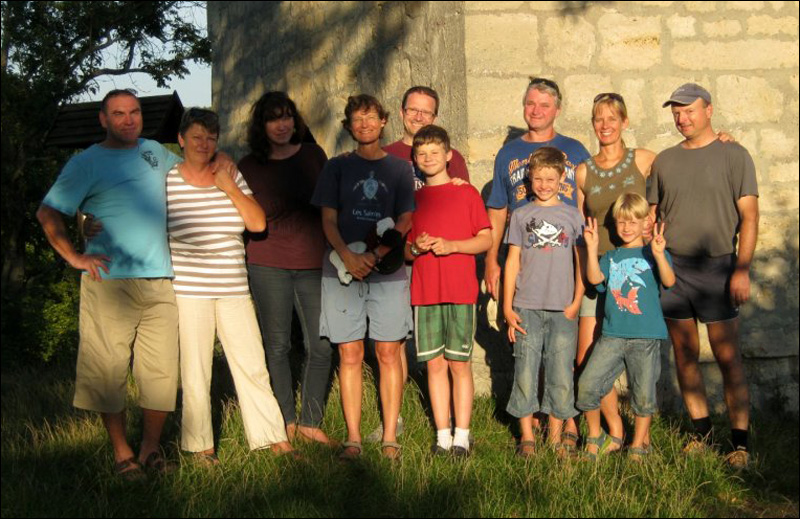
Germany: Meeting our fellow sailors who have also returned home
has helped the transition back.
Finally, we were also able to come home to the very same apartment – a home we love in a town we love in a gorgeous part of the world. Part of the latter was true the first time around, in that we also came home to the same town, though dealing with temporary housing was a significant issue for me.
My main frustrations on coming home the second time were small things, like the shock of coming home from a beautifully simple, off-the-grid life to a world that is even more absorbed in electronic devices and multimedia entertainment.
After the second trip, I slipped easily back into the same job, though it took a while to adjust to the idea that I would be doing it for years and not just as a short stint. Six months down the line, I’ve digested that fact at last!
And what about my husband and my son?
• With our son, it’s hard to judge because he had a smooth transition each time.
He was only four years old after the first trip and would have just been starting in a new school anyway. His kindergarten teacher did comment that he seemed a little overwhelmed by being surrounded by twenty other children all the time. (He had been in day care previously with the same number of children, but during our year at sea he got accustomed to having no more than two or three playmates at a time.)
After the second trip, he re-entered the same school. We were very lucky that a number of the students he knew from grade 1 were in his new grade 5 class – including his closest school buddy, with whom he’d been in email contact throughout the cruise.
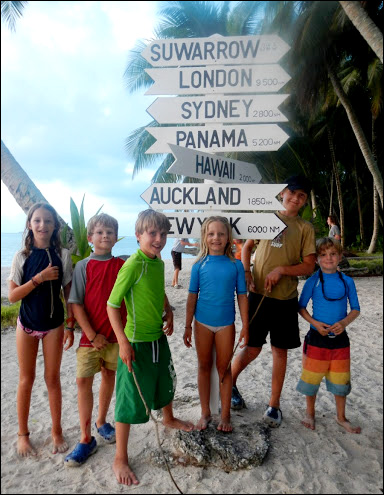
The boat kids of Suwarrow, Cook Islands
So for our son, the transition was quite easy, too. He had enjoyed the company of several other kids while cruising (as well as attending a few local schools and a summer camp in New Zealand), so the group social situation of school wasn’t as much of a shock to him.
The main observations his teacher made was that he was so used to home schooling alone that he had a hard time working in pairs – in the sense that he’d do his half and let his partner do the other half without realizing that it ought to be a collaborative process.
I was surprised, because while sailing, he collaborated beautifully with kids of different ages, backgrounds, and even languages. However, those were all informal situations and it seems that it took some time to transfer the skill to a school setting.
• My husband reports that transitioning back home after the second trip was slightly more difficult than after the first, though not by a great deal. He had no trouble finding a new job after the second trip, and although it was at a different company, he was familiar with the setting since he had consulted for that company while in his previous employer.
How broadly applicable are our experiences?
It’s hard to say. The sailors we know who’ve done the same kinds of sailing trip have a range of experiences to report. Some came back to their previous homes and immediately thrived, while others floundered. Others settled in entire different places (even different countries) and again, some are full of cheery news while others sing the blues. The question is, is there a single secret to success?
One sailor I spoke with observed that there are so many books that help you go cruising, but none that help with the transition back. It may well be that the variables range over such a wide spectrum that it’s hard to establish a pattern.
I’m no expert, but I will mention two things that helped ease both transitions back for us (aside from the obvious: having jobs to pay the bills and alleviate that stress).
- One was maintaining contact with sailing friends – both those still out there and those who like us are back to more humdrum lives. They’re the ones who understand us best and with whom we laugh the deepest laughs, smile the widest smiles.
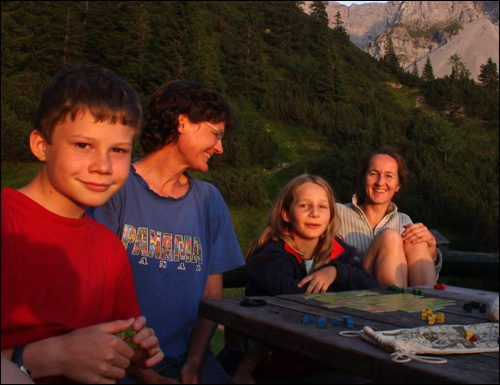
Two families who last met in the Cook Islands reunite on a weekend hike
- The second factor was having a new goal that I could be passionate about working toward to replace the “loss” of the sailing lifestyle.
For me, that goal was writing Lesson Plans Ahoy after I returned from the first trip, as well as writing magazine articles for the sailing press. These gave me a chance to relive parts of my trip while producing something valuable for others, which is rewarding.
My goal now that we’re back from the second trip is to not only write more non-fiction (like Pacific Crossing Notes and Cruising the Caribbean with Kids), but to branch into fiction writing as well. This includes my two sea adventure novels (The Silver Spider and Rum for Neptune) as well as other projects in the works.
In many ways, these fiction-writing goals give me the new horizons I crave, and that’s another reason that this second transition was a smoother one. If I had come home with the feeling that the grand adventure was over and had nothing to look forward to, I would be telling a very different story right now.
We count our blessings every day – those that allowed us to go sailing in the first place, and those that give us new aspirations now that we’re back. We’re thankful for our health, luck, and the family members who let us go, then welcomed us back, not to mention friends and employers who generously did the same.
Are we done with sailing?
Not by a long shot! But we’re content to pay our dues and pursue other goals until we earn a third chance to live the sailing life we so enjoy. Someday!
About Nadine Slavinski
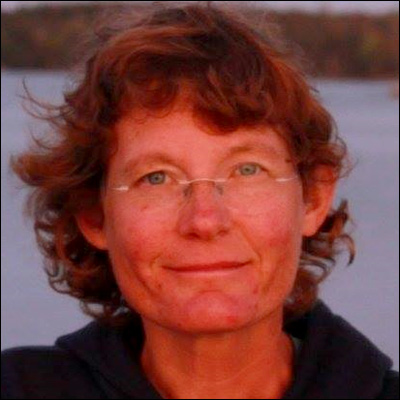
caption.
Nadine Slavinski is a parent, sailor, and Harvard-educated teacher.
She lived aboard her 1981 Dufour 35 for four years and cruised from Europe to the Caribbean, North America, and on to Australia together with her husband and young son.
She is the author of three sailing guides:
- Pacific Crossing Notes: A Sailor’s Guide to the Coconut Milk Run
,
- Cruising the Caribbean with Kids: Fun, Facts, and Educational Activities
,
- Lesson Plans Ahoy: Hands-on Learning for Sailing Children and Home Schooling Sailors Paperback
.
Her next project is The Silver Spider, a novel of sailing and suspense.
Her articles and links to all her books are available on her website: www.nslavinski.com
Read more on this website:
- Nadine Slavinski Answers 12 Questions on Sailing as a Family
- Sailing Families Revisited: The NAMANI Sailing Family update
- Back to land: Choking on the anchor, by Clare Collins

